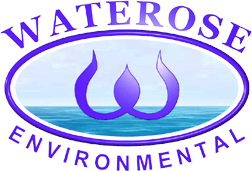 | ||||||
| Articles | Projects | Resume | Cartoons | Windsurfing | Paintings | Album |
Sustainable Development Series:
New Environmentally Friendly Technologies for
Cooking and Heating Food

by Waterose
What better way to bring people together than with food. Food is a universal language in all cultures. For example, at our church, four different cultures converge regularly for potluck lunches and even though we cannot speak one word of each others vocal language, we can converse gaily over a wide variety of food prepared in different ways.
The preparation of food varies both between cultures and between time periods. Historically, we have used wood to meet our energy needs for warmth and to prepare food. Some cultures in developing countries continue to use wood as their primary source of fuel to prepare their food.
Conversely, the western countries developed technology to harness other forms of energy, such as fossil fuels or electricity, to cook and heat food. The most common technology to cook food in North America has been the traditional electric or gas range and oven. The most significant breakthrough came with the invention of the microwave oven which has become a standard appliance in the average household.
There are some new technologies that are entering the North American market which are less well known that the microwave oven. The driving force to develop new technology to prepare food is the desire to conserve energy and realize economic savings. In some cases, new technological enhancements have been developed for existing technology. For example, several new types of stove top burners have been developed (Home Series, 1998). The standard electric coils are the most common and inexpensive type of stove top. Next, came the solid elements which spread heat more evenly to the pan contact surface. Then, came the smooth cook tops that have an option of three different types of heating elements that are concealed beneath a ceramic glass surface. The first type is a radiant element that is essentially an electric coil below the ceramic glass stove top. The second type is a halogen lamp which delivers heat instantly to the surface of the pan. The third type is the magnetic-induction element which heats the bottom of the cooking vessel by magnetic induction. The induction type is the most energy efficient and the most expensive.
There is new technology in North America still in the development stage that has yet to reach the home market. Enersyst Development Center (Enersyst) has developed new technology which cooks food two to four times as fast as traditional oven methods (Bounds, 1997). The "e" technology uses a combination of jets of hot air focused directly onto food combined with microwaves. Etech was originally developed for NASA’s Space Station Freedom and successful pilot projects have been implemented for commercial food preparation in restaurants and food-manufacturing plants. Enersyst anticipates that they will bring this new technology into the home by the fourth quarter of 1998.
In addition to developing new technology by enhancing existing technology, or combining technology to create more complex units, there is also a "green grass movement" in developed countries back to simpler cooking methods. For example, there is a trend to return to the pressure cooker; a unit that, mysteriously, only grandmother knew how to operate. The modern day pressure cooker is redesigned to cook faster and use less energy (Real Goods, 1998). The Kuhn Rikon was designed in Switzerland and is marketed and exported globally. Simple in design, it is manufactured of stainless steel with an aluminum core to facilitate quick heat transfer and a special seal system.
Even simpler than the pressure cooker is the evolution of efficient cooking stoves that use alternate fuels. Some of these fuels include: organic fuels such as animal dung, agricultural wastes, wood, charcoal, sawdust, and biomass briquettes; liquid fuels such as kerosene, and alcohol; gaseous fuels such as natural gas, and, bio-gas; and, solar fuel (Efficient, 1998).
Solar cooking is simple and does not use sophisticated technology; unlike most other new developments in the western world. The solar cooking box (SCB) was originally developed in the USA in 1976 (Rodgers, 1979). It is a simple cardboard box, lined with foil, that uses passive solar energy to cook food and pasteurize water. The internal chamber can reach temperatures up to three hundred and fifty degrees Fahrenheit. The food is placed into a sealed container which is then placed in the SCB for several hours. There are many advantages to using SCBs’, especially in less developed areas in North America and around the world.
The primary advantage is the low cost and the simplicity of SCBs’. In less developed countries (LDCs’), wood is the primary fuel that is used to cook food. It requires many hours to collect sufficient wood to cook food for a family. The Food and Agriculture Organization of the United Nations has predicted that fuel wood shortages will be imminent by 2000. The SCB eliminates the use of fuel wood, and related health problems caused by constant exposure to the smoke from cooking fires. Furthermore, solar energy is free, abundant, and SCBs’ do not create harmful emissions into the community. There have been significant efforts directed into establishing pilot community projects to use SCBs’ in LDCs’ such as in Zimbabwe (Rodgers, 1979) and Lesotho (Grundy, 1998), in Africa. In addition to cooking food, SCBs’ can be used to pasteurize potable drinking water (Solar, 1998).
Solar cook box technology has recently hybridized with the combination of the SCB and the curved concentrator by a joint effort of co-developers from France and USA. This simple hybridized solar cooker is being field tested in the USA and Kenya and can cook food, bread, and pasteurize water (Cookit, 1998).
The simple technology is being designed to assist the impoverished that live in less developed areas. It is affordable to purchase and operate, consumes a renewable energy source, and generates no harmful by-products. Conversely, sophisticated technology is being designed to reduce energy consumption in developed countries and, no doubt, the wheel of industry will keep the economy going ‘round.
It is tragic that the use of the two extremes of new technology, simple and complex, are segregated by wealth rather than by the geographic location of the continents. I am reminded of our church potlucks, where even language barriers cannot segregate us from sharing our community spirit and our wealth.
References:
Cookit Foldable Family Panel. 1998. Internet URL: http://www.accessone.com/~sbcn/cookit.htm
Efficient Cooking Stoves. 1998. Internet URL: http://www.greentie.org/class/ixf18.htm
Grundy, Dr. R.R. 1998. Diffusion of Innovation: Solar Oven Use in Lesotho. Internet URL: http://www.accessone.com/~sbcn/lesotho1.htm
Home Series Entry. 1998. Ranges, Ovens and Microwaves. Internet URL: http://www.energy.iastate.edu/homeservices/appliance/cook.html
Real Goods. 1998. "Time Saving Pressure Cookers use 70 Less Energy." Internet URL: http://www.realgoods.com/products/kitchen/54-529.htm.
Rodgers, P.M. 1979. "The Introduction of a Radical Innovation in Cooking." Master of Science in International Agricultural Development. University of Connecticut. Internet URL: http://www.accesspme.com/~scbn/zimb-the.htm
Solar Box Cookers Northwest. 1998. "A Simple Solar Water Pasteurizer." Internet URL: http://www.accessone.com/~sbcn/spasteur.htm
Return to Index of Environmental Articles

 email Waterose
email Waterose
Please Sign My Guestbook
Please View My Guestbook

| Articles | Projects | Resume | Cartoons | Windsurfing | Paintings | Album |
 | ||||||